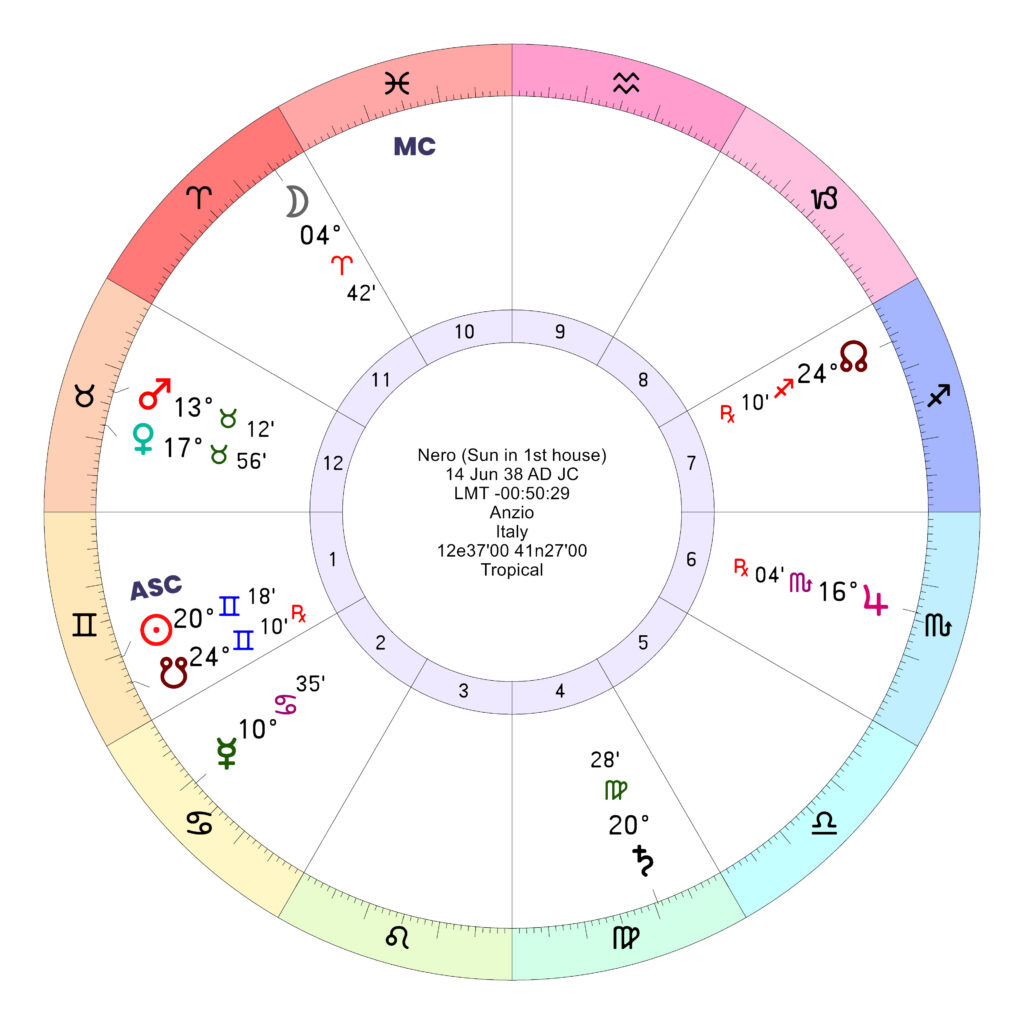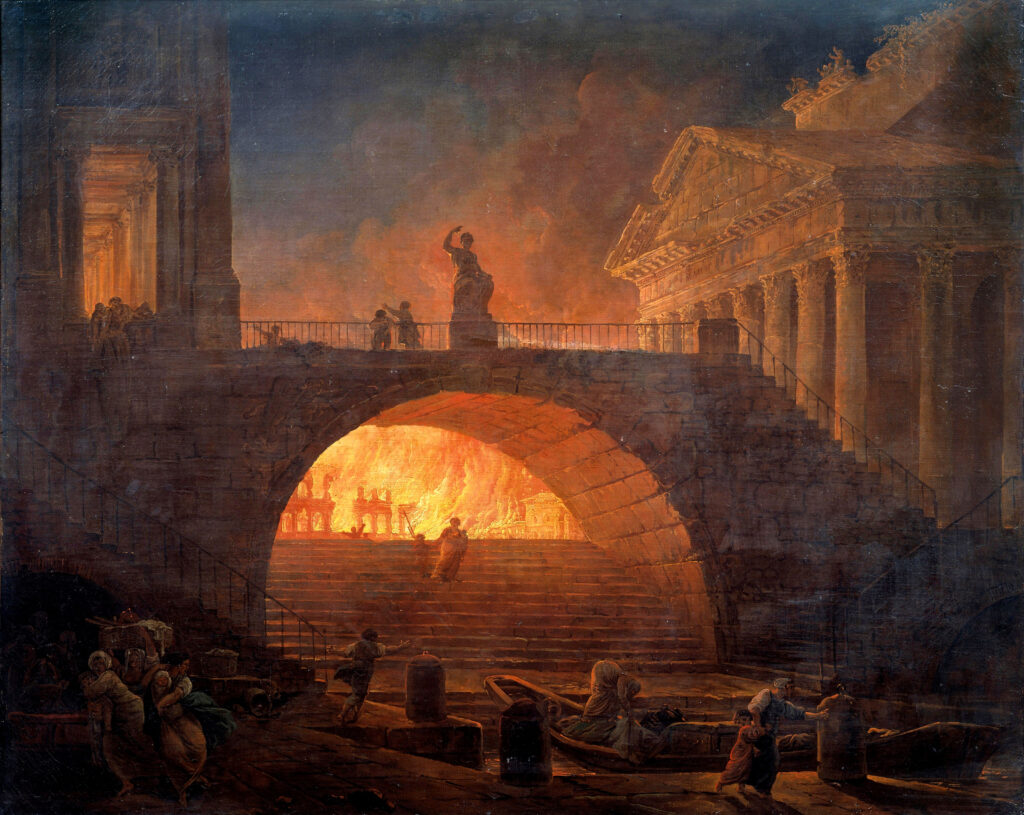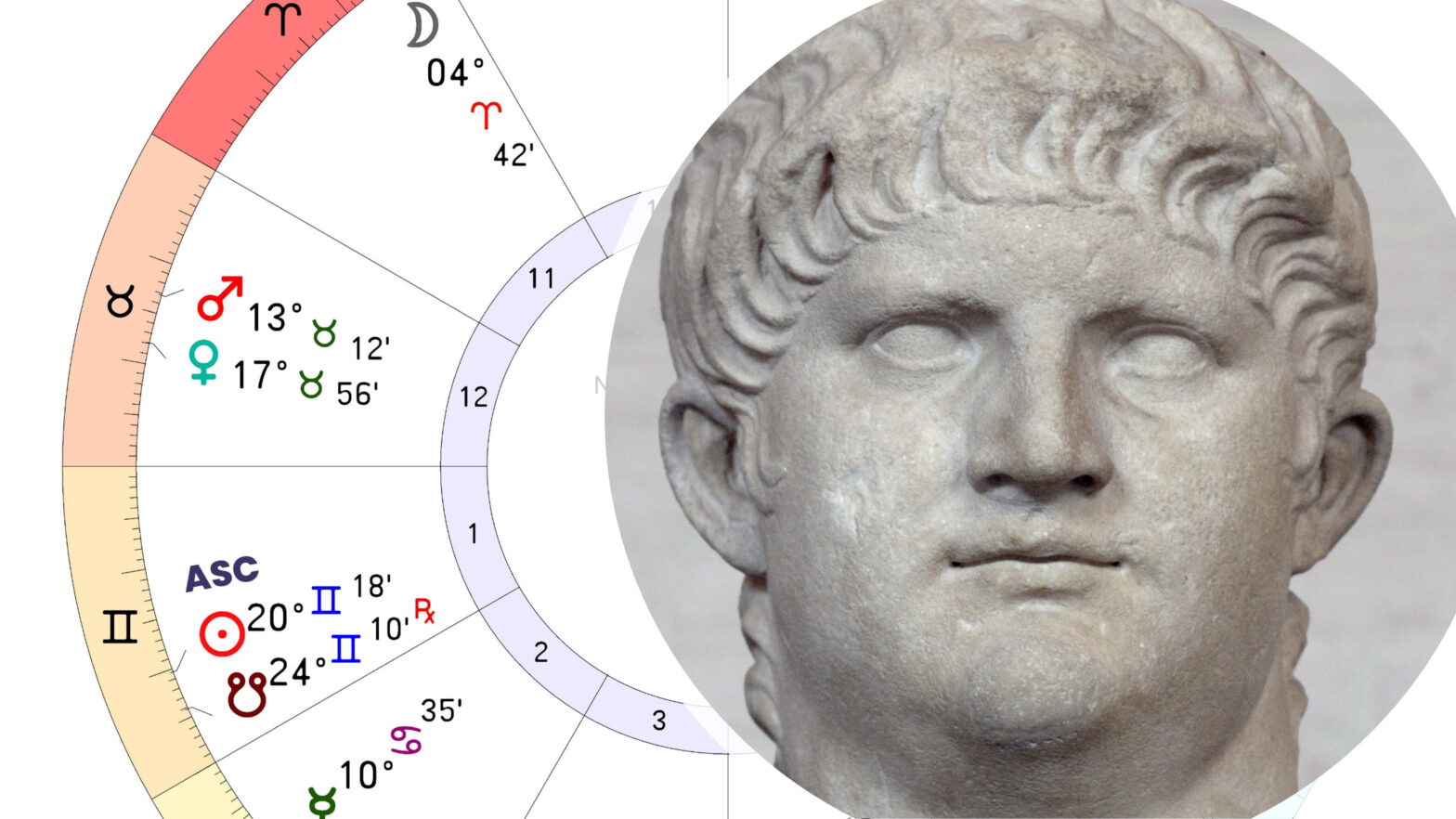This is the true nativity of Nero (so says the learned Cardano), and indeed, snow does not more resemble snow than this horoscope matches the actions, manners, and fortunes of that monstrous prince. His cruelty toward his brother, his wife, his mother, and ultimately the whole city of Rome—by fire, by debauchery, and by savage vice—finds perfect reflection in this chart. Cardano’s brief judgment aligns fully with both Nero’s body and mind.

His temperament, his harsh inclinations, his savage conduct, and his barbarous nature are vividly depicted in this figure. It is a scheme so contrary and perverse that the man born under it was bound to be twisted in disposition and prodigious in wickedness, exceeding even the basest among men.
To indicate his notorious crime against his mother, Agrippina (for that was her name), we find Mars in opposition to Jupiter, who is lord of the tenth house. Mercury, ruler of the Ascendant, is in a partile square with the Moon. Now the Moon, as all learned students of the stars agree, has a general signification of the mother. These aspects are formed from angular positions and from cardinal signs—strong arguments in astrology for a parricide. I have even read one author who described Nero’s killing of his mother as an “ingenious cruelty,” claiming his purpose was to destroy the very cabinet of his conception. (See Psencographia Anthropologica, near the end.)
The square between the Sun and Saturn, again from angles, made him not only detested by the people over whom he ruled by imperial right but also inclined him to commit acts that earned hatred and contempt.
Among his many black deeds, let it not be forgotten that he not only murdered his mother, but first committed incest with her; that he poisoned his brother; killed his sister-in-law; murdered his wife Poppaea—who was then pregnant—by kicking her to death; set fire to the city of Rome and took delight in watching it burn. With many other atrocities besides.

After these unparalleled cruelties, these bloodstained and inhuman acts, the Roman Senate declared him an enemy of the State. Upon hearing this, Nero became his own butcher, and, according to Calvisius and Isaacson, he killed himself in his thirtieth year. But Cardano claims it was in his thirty-second year—a judgment I am inclined to accept, for the primary directions indicating his downfall and death occur around that time.
Those directions were: the Moon applying to the conjunction of Mars, and later to the opposition of Jupiter, who, again, rules the tenth house. These are clear testimonies in the art, signifying both the disgrace he endured and the horrific end he met.
Thus much for this nativity.
From A Collection of Nativities, JOHN GADBURY
Commentary by Satya
According to Astrodatabank, Nero’s birth data—sourced from Suetonius—is recorded as December 15, 37 CE (Julian calendar), at 7:30 AM in Anzio, Italy. This differs from the chart Gadbury uses in his delineation. Despite the discrepancy in birth data, Gadbury’s analysis remains valuable for understanding the traditional astrological reasoning and how chart configurations were historically linked to life events.
In interpreting the mother’s role, Gadbury assigns significance to the tenth house. He notes Jupiter, lord of the tenth, in opposition to Mars, and the Moon—traditionally a general significator of the mother—afflicted by a partile square from Mercury. All of these planets are in angular houses, amplifying their influence. Gadbury connects this pattern to Nero’s infamous acts against his mother, and extends the symbolism to his broader crimes: poisoning his brother, killing his sister-in-law, murdering his pregnant wife, and setting fire to Rome.
He further associates the square between the Sun and Saturn, formed from angular positions, with Nero’s widespread unpopularity and the public’s hatred. As for the timing of Nero’s death, Gadbury points to primary directions involving the Moon—first conjoining Mars and then opposing Jupiter, lord of the tenth—as indicators of his dishonor and eventual suicide.
Takeaway: Strong angular squares involving the luminaries, particularly when tied to malefics, can signify great internal and external conflict, and in extreme cases, violence and disgrace.
